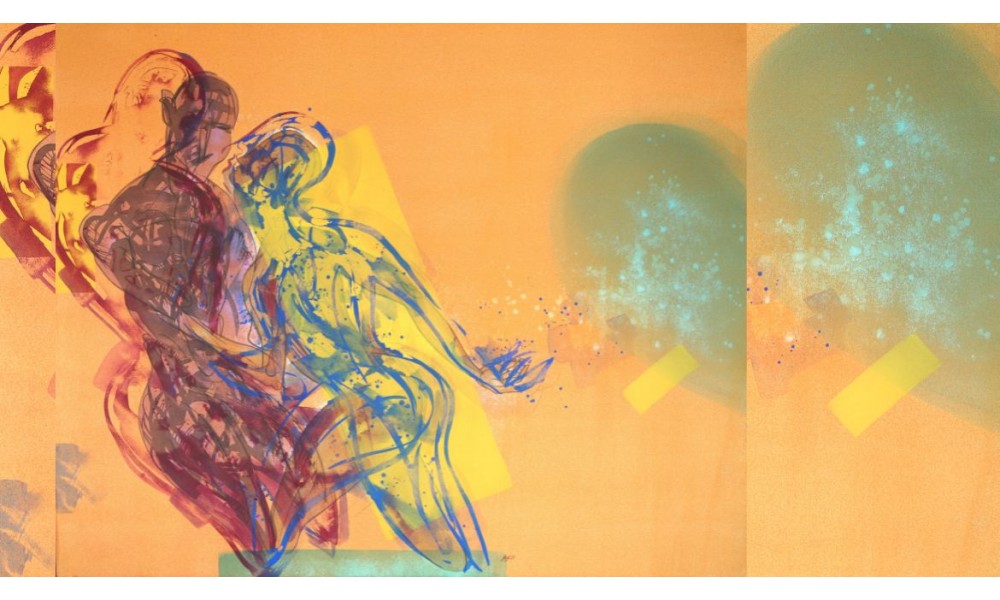
"Exploring the Depths of Abstract Art: Communication, Culture, and Consciousness"
What I understand on Abstract Art that its pure communication! A great way to unravel thoughts and create art in a more intuitive way.
I feel it is art that does not represent an accurate depiction of visual reality. Just instead through lines, its shapes, colours, forms and gestural marks. This visual examination may reveal sacred meaning therefore giving permission to the viewer to perceive through their own consciousness the possibilities of the illusion of the image. In this way abstract painting becomes the suggestion by the artist giving permission to the viewer to find meaning.
Abstract artists use a variety of techniques to create their work, mixing traditional means with more experimental ideas. The artist uses His /Hers energies and motion made visible thru art. This form of Art has no voice. Artists were no longer expected to faithfully represent what they saw in the world around them. Instead, abstract art gave them licence to create art by prioritising instinct or the unconscious.
No matter what type of art you are attempting to see and comprehend, you must first place it in the context of history. Because art arises from culture - and only from the culture of a specific time. It mirrors the culture of the time from which it came.
Abstract art continues to evolve today. This form of art explores the boundary between abstraction and realism, encouraging the eye to travel across an archaeology of marks, words and textures.
Abstract Art influenced by Culture and Traditions!
Another important aspect to Abstract Art is the Culture the artist believes in, the traditions followed by and religious faith and beliefs!
1. Symbolism and Iconography: Cultural beliefs and religious symbols can heavily influence the imagery and symbols used by abstract artists. For example, artists may draw inspiration from sacred geometry, traditional patterns, or spiritual concepts that are rooted in their cultural or religious background.
2. Spirituality and Transcendence: Many abstract artists use their art as a way to explore spiritual or transcendent experiences. Cultural and religious traditions often offer rich sources of inspiration for artists seeking to convey profound emotions, metaphysical ideas, or connections to the divine through their work.
3. Rituals and Practices: Some abstract artists engage with cultural rituals or artistic practices that have spiritual significance. For example, artists might incorporate repetitive or meditative processes into their art-making, drawing on traditions that emphasize mindfulness, presence, or spiritual devotion.
4. Cultural Identity: Abstract artists may explore themes of cultural identity, heritage, or belonging in their work, drawing on their unique cultural background as a source of inspiration or critique. Artists may use abstract forms to challenge dominant cultural narratives or to celebrate the richness and diversity of their heritage.
Overall, the influence of culture and religion on abstract art and artists is complex and multifaceted, shaping the themes, techniques, and meanings that artists explore in their creative practice.
Abstract Art for a non-artist and a common man!
Abstract art can be understood and interpreted in various ways by the general public. Some people appreciate abstract art for its aesthetic qualities, including its use of color, form, and composition. Others may find abstract art challenging or confusing because it does not always represent recognizable objects or scenes.
One way to understand abstract art is to focus on the feelings and emotions it evokes. Abstract artworks can convey mood, energy, and expression through the artist's use of brushstrokes, color choices, and other elements. Viewers may find that abstract art prompts them to think more deeply about the artwork and their own reactions to it.
Overall, the interpretation of abstract art is highly subjective and can vary from person to person. Some may enjoy the freedom of interpretation that abstract art offers, while others may prefer art that is more representational and easier to understand at first glance

 English
English Deutsch
Deutsch
All comments